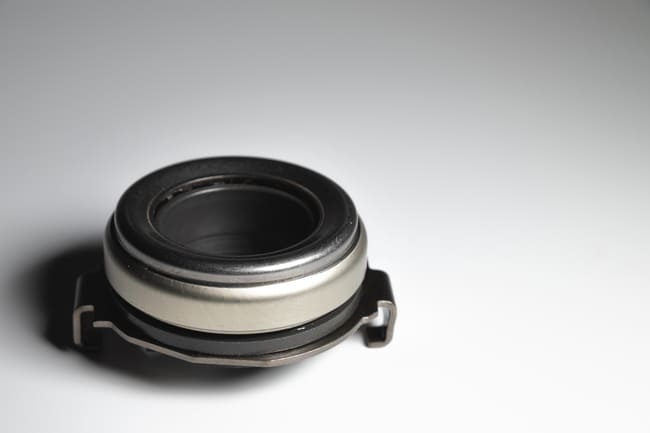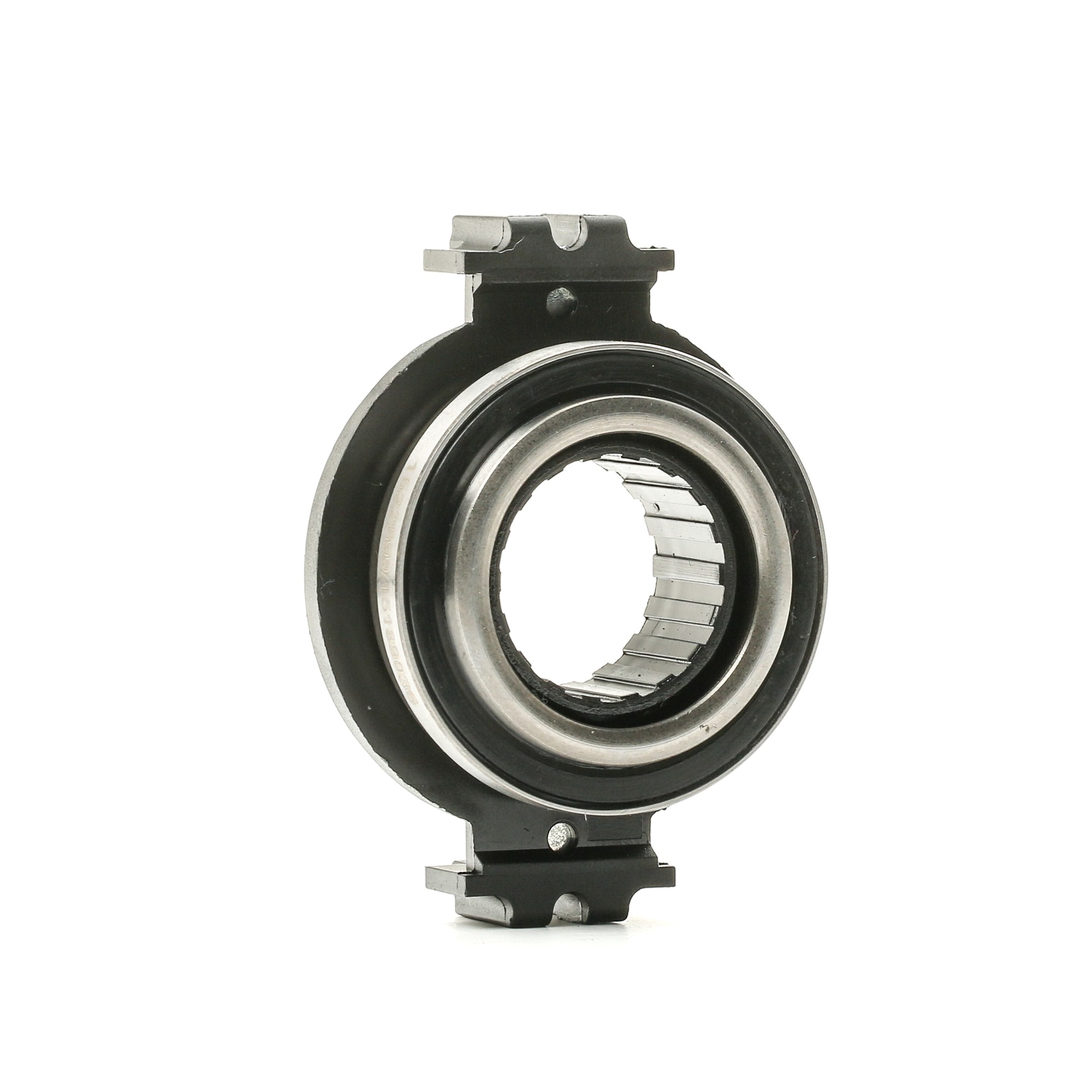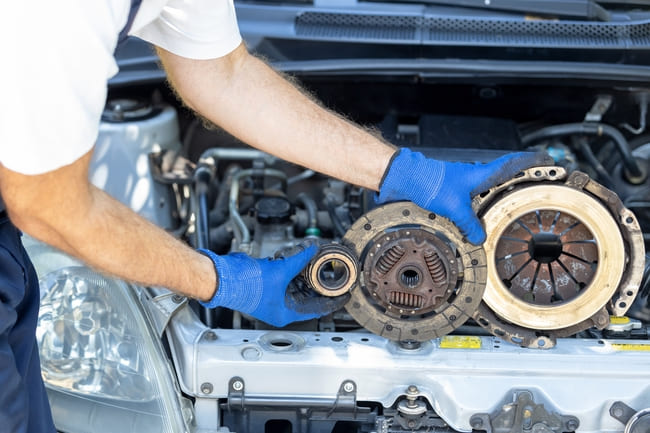Table of Contents
Thrust bearing noise: failure symptoms and replacement
The clutch release bearing, also simply called the thrust bearing or release bearing is part of the clutch and is responsible for separating the power transmission from the engine to the gearbox. When you operate the clutch, this force is transmitted to the release lever, which in turn moves the release bearing. The release bearing can now press against the clutch springs and thereby release the clutch plate from the pressure plate so that no more power can be transmitted to the transmission shaft. This mechanism is activated every time you shift gears. As soon as you release the clutch pedal again, the release bearing is moved back and the pressure plate can act on the clutch plate again and transmit the force.
responsible for separating the power transmission from the engine to the gearbox. When you operate the clutch, this force is transmitted to the release lever, which in turn moves the release bearing. The release bearing can now press against the clutch springs and thereby release the clutch plate from the pressure plate so that no more power can be transmitted to the transmission shaft. This mechanism is activated every time you shift gears. As soon as you release the clutch pedal again, the release bearing is moved back and the pressure plate can act on the clutch plate again and transmit the force.
Thrust bearing failure symptoms
On a positive note, release bearings normally last more than 100,000 km or about 62,000 miles, and can do their job quietly for a long time. The most common cause for a defect is material fatigue or normal wear and tear. When the release bearing becomes defective, you will usually first notice the noises that occur when you operate the clutch pedal. A defective release bearing causes friction, which is why the noises usually sound scratchy or like grinding. If the defect is well advanced, you will notice the problem through so-called clutch slippage, i.e. the car does not accelerate properly even though you changed the gear and the engine speed increased. At this point at the latest, it is time to change the release bearing, or if you have a Ford, the Ford release bearing.
Sold by AUTODOC Sold by AUTODOC Sold by AUTODOC Sold by AUTODOC Sold by AUTODOC  RIDEX Clutch release bearing
RIDEX Clutch release bearing
 RIDEX Clutch release bearing
RIDEX Clutch release bearing

 SACHS Clutch release bearing
with guide sleeve, with release fork
SACHS Clutch release bearing
with guide sleeve, with release fork

What to do in case of a defect?
Broken or worn bearings do not stop your car immediately. However, the noises become very unpleasant over time. The irregular rotation of the wheels also increases fuel consumption. You shouldn’t wait too long if you notice a defect and buy new bearings right away. In the advanced stage of wear, the bearings can become jammed, and then, at the latest, it is no longer possible to continue driving and a change of the bearings becomes necessary.
How do you change the release bearing?
When changing the release bearing, we generally advise against repairing it at home. Depending on the type of transmission, the drive shaft, transmission mounts, gearbox, and clutch must be taken apart, and the. In addition, the cover, pressure plate, and clutch diaphragm spring must be removed. This list makes it clear that changing a release bearing is a complex operation that should generally be left to professionals. However, if you are an experienced hobby mechanic with a well-stocked workshop and, most importantly, a car lift, you can also attempt this repair yourself. Since there are different clutch designs, e.g. hydraulic or mechanical, it is not possible to provide general step-by-step instructions for the replacement and installation of a release bearing. It is therefore important to look for a good vehicle-specific manual and use it to carry out the replacement.
Preventive maintenance
To make sure all parts of your car are operating at their best, make sure to develop good driving habits and follow the maintenance schedule prescribed by the manufacturer.
Top products related to this topic:
- VW Polo clutch release bearing
- Fiat 500 clutch release bearing
- Saab 9-3 clutch release bearing
- Audi A3 clutch release bearing
- Mini Cooper clutch release bearing
Useful videos on this topic
















